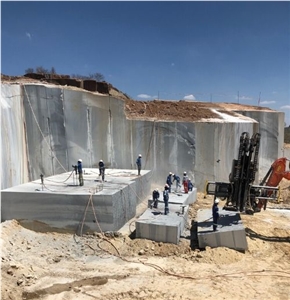Unveiling Granite Quarries in South Africa Legacy: A Journey Through Quarries
Revealing the Mysteries of Granite Quarrying: Where Toughness and Beauty Meet
The globe of granite quarrying is a world where the raw strength of nature assembles with human virtuosity to create frameworks that stand the examination of time with an air of elegance. From the depths of quarries to the thorough sprucing up in workshops, the process of changing granite right into architectural marvels is a complicated dancing of tradition and development. As we peer right into the midsts of this old craft, we begin to discover the surprise complexities that form the really essence of our constructed environment.
The Origins of Granite Quarrying
In the record of architectural background, the beginnings of granite quarrying are shrouded in a tapestry of ancient workmanship and geological wonders. Dating back to ancient Egypt and Mesopotamia, the extraction of granite from quarries marked the start of a trip that would eventually cause the production of several of the world's most famous frameworks.
Granite quarrying's roots can be traced to the knowledgeable artisans who acknowledged the rock's longevity and visual allure. Through a mix of primitive devices and sheer decision, these very early quarry employees uncovered granite blocks that would certainly become the building blocks of human beings.
As human beings advanced, so did the techniques of quarrying granite. The Romans, renowned for their design expertise, created advanced methods for extracting granite to build monuments, temples, and roads that stood the test of time.
The legacy of these ancient quarrying methods remains to shape modern architecture, with granite remaining a symbol of strength and elegance in building projects around the globe. (granite quarries in south africa)
Devices of the Quarrying Trade
The development of granite quarrying methods from ancient worlds to modern times highlights the critical duty played by the tools of the quarrying trade in forming the market's techniques. In old times, quarrying tools were primary, usually including chisels, hammers, and wedges made from products like bronze or iron. These tools called for considerable manpower and time to remove granite blocks from quarries.

In addition, the introduction of pneumatic tools and high-powered equipment has substantially minimized the physical labor called for in quarrying procedures, boosting employee security and performance. As the quarrying market remains to introduce, the tools of the trade remain at the forefront of driving progress and shaping the future of granite removal.
Removing Blocks of Granite
Utilizing accuracy machinery and advanced strategies, the removal of granite blocks from quarries has come to be an innovative procedure in the modern quarrying sector. Regulated blasting techniques are then used to damage apart the granite into manageable sections.

Sprucing Up and Ending Up Strategies
To attain a perfect surface area on granite blocks, proficient artisans employ a series of precise sprucing up and completing techniques. After the preliminary extraction and forming procedures, the granite obstructs undergo a comprehensive sprucing up stage to improve their all-natural beauty and sturdiness.
Along with polishing, completing strategies are related to additional improve the granite's appearance. These techniques may consist of flaming, sharpening, or brushing, each offering distinct appearances and coatings to suit different visual choices. Flaming, as an example, involves subjecting the granite surface area to heats to produce a harsh, distinctive finish, ideal for outdoor applications where slip-resistance is necessary. Sharpening, on the various other hand, provides a matte finish that is smooth to the touch, ideal for indoor counter tops and floor covering. By meticulously picking and using these polishing and finishing techniques, artisans can transform raw granite blocks into exquisite pieces that showcase both strength and elegance.

Ecological Impact and Sustainability
With the growing focus on environmental awareness in the industry, granite quarrying techniques are progressively scrutinized for their influence on natural sources and long-term sustainability. Quarrying for granite can have substantial environmental effects. The extraction procedure frequently entails making use of hefty machinery, nitroglycerins, and large quantities of water, leading to habitat devastation, dirt disintegration, and water contamination. In addition, the transportation of granite from quarries to refining facilities creates carbon emissions, better adding to More about the author ecological deterioration. granite quarries in south africa.
To minimize these effects and make certain sustainability in granite quarrying, industry stakeholders are taking on various procedures. Applying advanced innovations to lower energy usage and water use, redeeming quarried land for environmental reconstruction, and promoting liable sourcing practices are some methods being used. Certifications such as the Woodland Stewardship Council (FSC) and the Management in Power and Environmental Design (LEED) help consumers identify environmentally friendly granite products.
Conclusion
To conclude, granite quarrying is a procedure that needs specialized tools and techniques to remove blocks of granite and brighten them to a high degree of surface. While the environmental impact of quarrying can be significant, initiatives are being made to boost sustainability methods in the market. In general, granite quarrying is a delicate balance in between using the toughness and sophistication of this natural rock while decreasing its effect on the atmosphere.